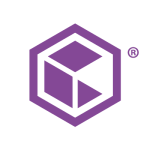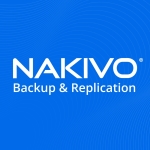What is our primary use case?
We use MSP Backup & Recovery for just about any backup system, as long as it is running Windows or Windows Server.
We also have a couple of clients that have databases to back up. It does a very good job of automatically picking up an SQL or a MySQL database. If we need to restore just the database to another machine, although we don't have too many use cases for that, we have been able to do it when we tested it.
We use it for virtual machine backup and recovery as well. It does a great job of that. So even if a client has a host system and, say, one VM running on it for a special purpose, but they don't have the budget to pay for two backups for some reason, it does a great job of backing up the virtual machine itself, and it can be restored independently.
How has it helped my organization?
A nice part about the SolarWinds backup and recovery solution is that I get to pick how it's deployed, and it's per-client. They really give you a lot of options with that. They pretty much have any feature that I, as an MSP, could want, and they let me choose how to provide their product to the client. I could cut out features if I wanted, which I don't, or I could add features as tiers to make a pricing bracket for myself to sell to them. I have one client that has a full, second dedicated server. It runs the virtual disaster recovery console, so it's constantly getting all the new backup images every day. If the first system goes down, the second system is able to bring it right back up.
I have other clients that just don't have that kind of budget. They simply need one workstation, not even a server, backed up. And they want me to be able to get either the files or the full image down from the cloud to put on a new machine. If the first one fails, they don't have the budget to have a disaster-ready plan where, if everything goes down, they have something running that takes it right back up. They have a spare computer onsite we would move things to. SolarWinds gives me the options to do both things very cleanly and to please those different levels of clients, without having to jump through too many hoops.
It does everything I want. I feel a lot better with it because I've already used it in the recovery scenarios and know it works and I've got guys testing things on a regular basis. The clients are happy because they know that I'm happy with the solution, because I'm usually going to suggest it over something else. It just makes everything so much easier on the backup. There used to be so much anxiety with other solutions because they were so much harder to manage.
This gives me a dashboard with a bunch of green, yellow, or red lights based on how things are going. I can put technicians into action based on things failing or not updating properly. And the few times we have had things go wrong, it has been easy to communicate with the client quickly and make them feel that we're very on top of it and aware of this process, just because of how the system is set up to work.
In general, we used to have to have that "backup conversation" with a client, every once in a while, to see how things were going. Now, because this is our baseline of how we expect things to work in a perfect world, even if they don't have this, it's made our backup documentation process easier. We tell the customer, "Hey, this is how it would work in a perfect world, but this is how your system works. If you want to get closer to where it could be, here are some things we can do." It has made it easier to talk to the clients about the options that they have.
Before, I didn't have a whole lot of confidence in the solutions we had, compared to the confidence I have in this. That lack of confidence in the products we were using made it harder for me to even have that conversation with the client. SolarWinds has just completely flipped that around, and that's true for other people inside our org as well. Other people were having the same grievances I was. It was hard to find a good backup solution where it didn't feel like we, as the MSP, were getting shafted in some way and we were having to charge the client a lot more because of that. It was especially true when you get into how a lot of vendors price their cloud backups compared to SolarWinds. It's absolutely crazy when you look at the cost comparison. So having that extra confidence and being happy with the solution has really changed the entire game and that's because of how it is priced and how they let us present the product itself.
The cost for the customer has gone down because we don't have them buying as much. We don't run a second recovery computer at many locations, unless the system is vital to every operation, because we have the Local SpeedVault that we use. It's either an onsite NAF or an external hard drive that stores all the stuff locally for the machine it would need to restore to. It gives us a really good, fast solution, compared to pulling it down from the cloud and messing with their bandwidth, especially if they have VoIP phones. The cost of investment has gone down. For a few niche customers that are much larger, the cost has gone up, but the return on investment, as far as data security goes, is much bigger. Previously, if I would have had them invest that much in another product, I wouldn't have felt good about it. But asking a larger client to put in a second server, so I can always push their stuff out right away if there is a failure, is a pretty big deal. By comparison, with Carbonite I actually had that set up, but when I tried to use the tool not only could I not get help using it properly, I never got the thing to work. With SolarWinds it was so simple, it felt almost too easy.
In addition, there is much less of a time investment from my techs, compared to before. That's the nicest thing it has changed in our everyday operation.
And for me, it has drastically reduced the amount of time spent on backup administration. We had people spread out on different odds and ends for different customers, for whatever solutions the customer wanted. We didn't have one solution. Between keeping things documented as well as I could, as a one-man show on that end, and actually being able to test stuff, if I could test stuff, and always trying to figure out the products, I'm probably saving a good 10 hours a month, if not a lot more just on that. If I had kept the solution we had before and grown to the number of customers I have now, I don't doubt it would have required another whole employee to manage things, with the amount of backup and the different solutions that we had to use. This one ended up bringing together any use cases somebody has, because most of our customers are running in a Windows environment. It fits their needs perfectly.
As for backup time on the computer and how long it takes to run, it's insane how much quicker it is compared to constantly having to check back and forth between what's going on on the computer and what I see in the cloud. Carbonite had poor solutions for looking at what was actively happening. With SolarWinds, after I install it on the computer, I never have to log in to the computer again, if I'm working at a higher level where I'm not interacting with customers. I can always pull up these backup systems remotely from the cloud. I pull up the system, it pulls up a webpage, and it gives me the percentage it's processing and how much data that actually is.
And if my local is synchronized with the cloud, I get to look at all this data in one place, compared to going back and forth between a local computer and maybe a website and one other thing. It's all in one spot. I can manage every computer from an easy console. It has probably saved 55 percent, if not more, of actual employee time. It's not something I've actually calculated, but I am the person who was spending that time before, and that's when we were supporting way fewer clients. We've grown this product with us as we've added people to it. I don't think we have many customers with an important local system that we haven't gotten to move to SolarWinds, unless they've outright refused to back up what they have.
The backups themselves seem to run much quicker, even though they're going to the cloud. It has two different phases. The time it takes to process the backup on the computer is quicker, especially if I've got my Local SpeedVault there, or my secondary system that is acting as a speed vault to bring it back up quickly if the system fails. Having either of those there, it gets done within minutes, most of the time. There have been very few times where I've seen it go above 30 minutes, and that's on a bigger system and when they had a lot of stuff going on that day. On my old system, I'd be watching this program take time to launch, run the backup job usually it would make the shadow copies first. This seems to do all that stuff so much quicker.
On the other end, it uploads to the cloud. If I did have a manual upload to the cloud before, or was using something like Carbonite, this seems to get to the cloud quicker than those. And if it's going to a local hard drive or a local secondary system that is a failover, it's stupid-quick. It's the difference between looking away for a little bit at another task while it runs, and it's done, compared to keeping another computer up or another page up with a loading bar for a bit, while I'm constantly going back to it and waiting for it to finish. That's the difference it's made in my every-day.
When it comes to recovery times, I'll give you two different scenarios. In the small scenarios, where just files or folders have been lost or deleted and we need to find them and restore them from within the last 30 days, it's gone from 10 minutes down to closer to seven or five minutes, because we know exactly where to go. Every one of our techs who is trained on this can get there super-easy. They're not having to memorize three systems.
The other end is the big scenarios. I've had an entire server go down or a natural disaster that has stopped the business from functioning, and I needed to get them up and running one way or another on a completely separate computer. I was only relying on my cloud data to do this. In those scenarios, it has reduced our recovery time by a minimum of 12 hours.
The difference is quite crazy. Before, even if I could get stuff down to another server, I had to install the server OS and get stuff running. I had nothing else that did a good virtual disaster recovery in the big cases. Virtual disaster recovery is so big because for any system, no matter how complicated it is, I can already have a server running that has Hyper-V installed, and I can get this thing up and running with Hyper-V within a matter of hours. Sometimes, it's less than an hour, depending on how quick my download is. Really, at that point, I'm limited to: Do I have local data I can source from as far as the backups go, or am I only going from the cloud? If it's only the cloud, my biggest limit is my bandwidth. Going full-blast at our shop, if we let that server do that, we can get somebody up and running in less than an hour, even if they have something like a 200-gigabyte setup. On a larger server with multiple terabytes, it does take longer. There's no way around that, unless they have that secondary system set up onsite. But for the people that do have that, I manually log in and start that secondary server up. I literally click a button and configure one or two things and I'm good to go. It's insane compared to before. I did not have a solution that came even close to that, a couple of years ago.
What is most valuable?
The most valuable feature by far is the Virtual Disaster Recovery. On top of that is the bare-metal recovery. The recovery options that we have are great. We have tested the Virtual Disaster Recovery and the bare-metal recovery in just about any scenario you can think of. We have even restored bare metal, a full server, to a laptop, and had full functionality. It's just insane how well it works and how simple it is. It does most of the work for you. I don't feel like I'm thinking too hard when I do this. I understand how the system works on the back-end, and what it needs to do, but I don't want to concentrate on that when I've got so many other things going on. This really does just so much of the legwork for me.
In terms of other types of recovery scenarios, it covers something as simple as somebody who has access to a shared folder and they delete a file on it because they weren't thinking about the fact that it's for everybody, not just for them. That's the scenario where, if it's within 30 days — because this has a 30-day history for backup — they call me and tell me that they deleted the file. I just ask them for either the file name or location or as much stuff as they can remember. I log in to the backup system from my console, get into the recovery part remotely — I don't even have to log in to the workstation hosts or the server host — I find yesterday's file and folder lists from a nice calendar view, and then I find the file that was there. I click it and restore it to the machine. I can restore it to a different spot if I want, but I usually just choose to restore it in place. I call them and confirm it's there. I've never had to take more than five minutes. It's quite nice for doing basic stuff like that.
A more extreme case was when we had somebody's entire system go down and we were able to virtually restore it, no issues whatsoever, getting it running offsite. We were able to link them up on a VPN until we got a temporary server there and fixed things, because they had a catastrophic failure. Luckily it was a simple server, so it wasn't too much work, but it was nice to keep them up, with their domain, in the meantime.
The most complicated recovery scenario is a host machine running multiple VMs, where we only have the host machine, itself, backed up. This is somebody who doesn't want to pay for the second server onsite, so our company has temporary servers. We're very physically close, meaning we can do a bare metal restore or a virtual disaster recovery and get everything they have up and running within about an hour after the failure. That is one where we have the file folder system state and VSS backup recovery running and, no matter what fails on their system, we can get it back out. Even if it's not full system failure, we can restore most things remotely. If it is full system failure, even if we have to bring it to a different site, we can get the data down within about an hour and then get it to wherever they need.
SolarWinds is very flexible and lets us do things the way we want to and we can do them quickly. For the clients that don't want to pay for that extra stuff to get it done quickly, we can explain to them that it's going to set things back this much. We really let our clients choose how they want to do things like this. So if they want a backup and recovery system, this one is very easy, because it's paid month-to-month and has very specific data caps and overage charges for those caps. It's super-easy to lay it out for any level of client, be it a one-person operation or a business that has 300 users and allows "bring your own computer."
Depending on what they have, we can give them an easy projection of what their investment in a system like that would be. There won't be any surprises such as, "Oh, we went over 1 terabyte, we now have to get to the 5 terabyte cap," which is something I had to deal with when I used Carbonite. Instead, if I go a gigabyte over the standard cap for a server or workstation, I pay a set amount of money that doesn't scale up or down. I know exactly what I can do with this solution for any client. I know exactly how much I can charge them and it's done monthly. It's easy for them to drop in and drop out on a monthly basis if they're nervous, because they're not dealing with that annual commitment that a lot of solutions shove at you, even if you get to pay monthly. That's a really big advantage in terms of peace of mind after it gets running.
And all of that is aside from the fact that they give you free archiving, which is really nice. Not many other solutions do that, cost-wise. I get to do as many archives of a system as I want and it doesn't count against the data for that user or customer.
It also gives me a single dashboard for all types of different sources it's backing up, such as databases, files and folders, system state, etc. It gives you your entire client list. It gives you a daily update of green, yellow, or red. Yellow means something kind of went wrong and maybe you should look at it, but wait. Red means something definitely went wrong and you need to take some sort of action to adjust. Green means every single thing worked properly, nothing had any errors.
I get a daily email that I'm able to integrate into my ticket system. The tickets come in only if anything fails. If something fails, my technicians get details of exactly what failed with an error code. And if I go into the console and look at the error itself, it gives me details and a resource center, from SolarWinds, where I can look it up. I can Google from there and figure it out.
That kind of information has made our backup operations much smoother, especially because the few times the Help articles haven't answered something for us, support has eventually gotten it to work, even if it seemed like a niche situation where we've got five other clients deployed like this yet one of them is having this really odd issue. SolarWinds support has been able to dig down. I have sent them logs and they've looked through them — hundreds of lines. They highlighted one, showed me what was wrong, told me what to fix, and it worked after that.
What needs improvement?
A better default view on my dashboard would be great. There is a lot of useless information there that it pulls up. They could present the dashboard slightly better, in terms of the extra information after the first five columns. The first five columns are awesome. After that, I don't care about the rest, and there are another seven things after that. You can customize it, and I do have my own customized dashboard, but it doesn't give me any option to make that the default view.
They could work a little bit on how they present you with your landing page. The first time I log in to this from any login window, I want a page that's a little bit more useful. This one gives me great info as to if my backup is good, up and running, or if it's had a certain number of errors. But after that, it tells me stuff like my product, which I do all-in for all our customers, so I don't care. It tells me my profile and I usually do a manual setup for most customers that's documented on my documentation system, which is also with SolarWinds. So I don't care about my profile version. All that stuff which is extra, that I really don't care about, is on this default view, and they don't let me save my custom view as my landing page. I have to go and find it again. It's deep down inside a menu at the very bottom and I can't make it go anywhere else.
Another point to be aware of is that the initial cloud backup, if you've got more than a terabyte of data, can take quite some time, because it's completely dependent on the customer's internet speed. That is one thing that we have run into. When I asked SolarWinds about that they noted they already have a solution for that.
What do I think about the stability of the solution?
Since deploying it, there has only been one weekend where there was a stability issue, and that only caused a problem for one of our 24 clients who are on the solution. It cleared up the next day.
What do I think about the scalability of the solution?
The scalability has been nice. I have had a system grow with this and I've had no issues. I'm not going to pretend that I've got a customer that has nine different servers or that I have 50 clients. But when I've had a single host server scale up its usage, this has handled it just fine. I've also scaled up the number of customers I have on the system. Both have been easy to work with. Scaling up the number of customers I support on my end has been easy, and scaling up the load on an individual host, running a large backup, has also been easy.
We're actually making a large push with most customers, if they have a system that requires it, to use something like this. Our criteria for them "requiring it" is that they have some sort of locally hosted program that is accessed by people at the business and that it's required for everyday use. If we've got somebody running QuickBooks off of a workstation, and they're really worried about backup, the workstation backup is priced well enough that it's worth having that always-up availability.
How are customer service and technical support?
I generally don't go to tech support until I have a really serious issue. But the times I have gone to tech support, they have given me good information. Even if it didn't directly solve my issue, it helped me to solve that issue and it was good info to have in the first place. If they needed to escalate the ticket, they did so properly and fairly quickly, if not quickly enough in all cases. It's definitely better than a lot of other tech support I've dealt with.
Which solution did I use previously and why did I switch?
We have been using SolarWinds MSP Backup & Recovery since the middle of 2018, when we started to need a recovery solution that was a bit better than what we had. Before we were using a custom solution of saving Windows backups to the cloud and to a local device. We had options there for bare-metal there and file recovery, but nothing that was overly reliable or easy to test.
How was the initial setup?
I have found the initial setup to be incredibly straightforward, especially because of the tools it provides you with. There are "how-to's" everywhere. I'm logged in to my dashboard right now. My name is up in the top, right-hand corner. There's a big question mark right by my name. I click on it and I immediately have two big sections: Help and Resources. Help has all the manuals, how it works, and a live chat if I get stuck. Resources has my sales guide, my downloads for any product I need, and my About The Product section.
Any info I need about these products is immediately available, just like most of SolarWinds' other products. They do fairly decent documentation or, if they've bought the product, they keep the documentation and move it over to their systems pretty well. And they give me the live chat when I get stuck, which has been helpful.
Setting it up generally takes me about 10 minutes, even if the system is large and complex. It's 15 minutes, tops, if I am dealing with it taking a long time to spin up or download something.
Because I do the training on this in our company, for the most part, I have already set up training for the standard operating procedure for deploying this backup. It's a four-minute video with some notes that the techs can use if they get stuck. It shows the entire process, from creating the customer inside SolarWinds, to adding the device, and getting on the device and deploying the backup itself. The nice part is, if there's a person who needs to work on the computer — because you can do this on workstations that people need to use and it works super-great — we just download it and install it really quickly. Because it becomes available in the cloud to configure, all my configuration can be done remotely without interrupting a local user.
To deploy the solution for one customer, it requires just one person. With all the customers we currently have on this, about 24 customers, I've got three techs handling it, including checking on the system, running restorations on a quarterly basis, and physically testing those restorations. If I didn't have to run the restorations, and that's something our company just chooses to do, I would only need one person for this whole thing. As it is, it's me and two other techs, one who is a level-2 and one who is a level-3.
What was our ROI?
It's a set price for servers and workstations, so we're able to charge our clients an amount that is a fixed percentage above our cost.
The previous backup and recovery methods cost so much that we would mark up our cost to the client quite a bit less, in comparison. For example, with Carbonite, we were probably only marking it up a fraction of the markup we can charge now and, when I needed Carbonite to work, it didn't. We want to treat our customers right. We have really good relationships with them. We know a lot of them, even though we have so many, and we don't want to feel like we're doing them wrong. At the same time we have to pay our guys.
Which other solutions did I evaluate?
We had previously tried out using Carbonite for Windows and Windows Server backups, but we were getting very poor recovery results. The backup always gave a green light, but when we actually went to recover in tests or real-world scenarios, we were missing stuff. And there was not much help or explanation as to why, if we reached out to support. That went really poorly. We made a hardcore switched to MSP Backup & Recovery after. Because it's able, for a really good price, to recover in just about every scenario — even crazy ones, in the real world and in testing — we switched over to this and just didn't look back. If it's running Windows Server or Windows 10 or Windows 8, etc., we're going to use this to back it up if the client needs a backup.
Before I licensed SolarWinds, I looked into Datto and Veeam. The differences between those solutions and SolarWinds MSP were commitment and pricing. The features were there. I'm not going to say that the products aren't as good, but they were not priced competitively when I consider my customer base.
I'm sure it is much different with somebody who has super-large organizations that they support. I would guess that they would end up going with Veeam, because Veeam is, honestly, a good solution. But when it has to account for anybody, from the small, one person operation, to the organization that has a domain and 300 users on it, Veeam doesn't work for me because I can't price it well for everybody. That's especially true when it comes to including the cloud backup solution. I liked Veeam as a solution but I did not like Veeam's pricing, comparatively, especially when I added cloud. The big differentiation was that cloud is automatically included with SolarWinds' solution. Not only that, but the cloud and the cost of using the software is all bundled together. If I go over the set amount of cloud storage, I pay an amount per gigabyte, so I can gauge that really easily.
On top of that, when it comes to the pricing structure, SolarWinds does things that it seems would be counterintuitive to their making money, and that was impressive to me, because I'm used to most vendors doing the whole "cash grab" thing. First, they have incredible deduping. If duplicate files on the system get uploaded, they make one source file that gets uploaded and it links back to the multiple spots that it was copied from. This saves time and this also saves money. It's crazy that it works this well. These are scenarios where I was worried about restoring them, at first. I thought, "It doesn't seem like all the data is there; it's only backing up one-third of the total storage on the server." But no, it all worked perfectly. Everything is there in the full amount. So they even reduce the amount of money they could charge you for data overages by reducing the amount of data that they put on their servers.
With Datto and Veeam, it felt like I was paying for the software, and that once I got the software I would have to figure out the rest myself. With SolarWinds MSP, it felt more like I was being given a solution. Everything feels like it's tailored and included. With the other systems, I really felt like I was on my own. Datto's prices were not so great, so I went away from them really quickly and looked at Veeam. The impression I got from Veeam was, "Hey, we're Veeam, we've been around forever. Everybody knows us. Figure out how to use it." And if I wanted cloud storage it was so much extra. And it wasn't per gigabyte. I really didn't like the pricing structure and model they went with. Because it felt like I was paying for the software and everything else was an afterthought, something like SolarWinds, where the software is bundled with the cloud storage was really nice for me.
What other advice do I have?
The biggest lesson I've learned from using MSP Backup & Recovery is that there are options out there that I can be confident in, and I don't feel like I have to break a customer's bank to offer them. It's a really big deal for us to be able to do that. Having tested it and used it at this level, it's changed so much how we view what can be done, for keeping even our small customers' data safe. Before, it felt like I had to do a lot of extra things for the smaller places, because they couldn't afford the solutions that were better. Now I have something that I can trust to just do that for them. And it's so easy to maintain that it's really hard to look back and see that we were using other stuff before.
My advice would be to understand that the features are there. Price it out, compared to the other solutions. Because they give you such clear-cut pricing with the system itself, it's really hard, when you get down to dollar and cents, for anybody else to compete, in my opinion. The only use case where that changes is maybe where many terabytes or petabytes of data are included, and you do not need a cloud solution. In that case your cloud solution is some sort of data center or solution you've set up yourself. If you need to back up to the cloud, and this goes for any size organization, and a data center is not an option, SolarWinds is something you have to consider. At least to price it out, especially considering you're never under any commitment, even if you want to try it for a month on one system. The worst case would be that you would get charged for a month of trying it out.
What I did for us, beforehand, was that I tested how it worked on our systems. The R&D for that, for researching that and figuring it out, is $10 on a workstation, or $50 for that one month. How are you going to compare that to anything else, where you have to sign a contract? You might get a trial, but it's unlikely that you are going to be able to figure everything out in that time. It's so much easier to work with, in all aspects that I can think of, specifically as an MSP. It's not that I think this is the solution for everybody, but for MSPs that don't support incredibly large organizations, this is perfect. It is exactly the solution that I wish I had found years ago.
When it comes to resource and bandwidth use in terms of backup recovery, for the most part I have not yet run into an issue. The one thing I have seen is a light blip on the VoIP. One time, when I was new to this and I restored a grouping of folders for a customer, while it was pushing stuff down we had some reduced phone quality. That download was taking up some of their VoIP. People could hear them fine but they were getting some static.
What I found out is that there's an option to limit bandwidth during the day. For every customer now, when I install the product, I just do a quick audit of their internet speed. Based on what they can get, I give the download and the upload a percentage of that, so that it won't affect other systems. The bandwidth usage is completely customizable. If you want it to, it'll use your whole connection to get something important, and you can change that on the fly. It's not like it takes time for those settings to push down. But if you want good, everyday operations, you just limit it to a healthy percentage of the bandwidth during the day, and you're good to go.
I am not using it to sell the automated recovery testing and I do not like that feature. I believe it has more of a risk for a false positive than anything. I have done the testing internally up until now with a team. When we have issues, we work on it as a group. We're all very aware of some of the pain points of restorations. One of those pain points is that, sometimes, that virtual disaster recovery is so good that even if I had a technician that did not configure a backup properly, if an error was made on our end, I don't get to see it because the virtual machine will spin up almost no matter what, Windows 10 and past. This system is that good. Even if I have a messed up computer that got backed up, it will still run and work and I've got to do a little bit more digging to figure out if it has an issue.
I had exactly that happen; not in a real-world scenario, but when our team was testing. I could have just said, "Okay, I'm going to do recovery testing and give you a green light when the VM turns on." It can do that. This system is so great that it can turn almost any VM on. This is more of a personal philosophy for how our company runs stuff, as opposed to the viability of the tool itself. SolarWinds does the most that it can really do, without manual interaction from a human being. It does a good image test to see if all your stuff is there and if the VM turned on. But if you do that and it allows you to become complacent, you could miss backing up the drive and never know it. We actually almost had that happen and it might have if we didn't do our own recovery testing and check for stuff like that.
Overall, I would give SolarWinds MSP Backup & Recovery a good 10 out of 10. There is not another product in the SolarWinds line of products that I'm happier with. This is the best of what they have, and I use almost every product they have, except their antivirus.
The highlights of this solution are the way that they price it, how easy it is to use, and how customizable it is. I get to choose exactly how I want to use it, since it comes, default, with every feature. I get to choose how I present it to customers, if I want to do that. This is a good product that's really fair, and it's not complicated.
Disclosure: PeerSpot contacted the reviewer to collect the review and to validate authenticity. The reviewer was referred by the vendor, but the review is not subject to editing or approval by the vendor. The reviewer's company has a business relationship with this vendor other than being a customer: Partner.

















